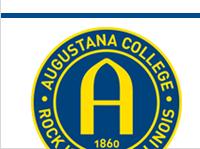In Union there is Strength: Swedish-American Sculptor Charles Haag
Exhibit on view October 26, 2018–February 15, 2019
This exhibit highlights artworks by Swedish-American sculptor Charles Haag who studied and taught in France before immigrating to America. Haag is best known for his sculptures that express the struggle of labor and immigration as well as his whimsical woodcarvings that pay homage to nature.
He says of his sculpture Accord, "Here is another theme I take from my life and put in bronze…It is typical of my country and the toilers where I am born. It is a man and woman, two peasants of Sweden, who pull together the old-fashioned plow of wood…. I call it 'Accord,' because so I think the sexes come nearest together in the peasant class, in their daily work at the plow, in the field."(New York Times interview, July 1, 1906).
Haag was born in Norrköping, Sweden in 1867. He started to work at the age of 12 as an apprentice potter. Later, he attended arts and crafts school in Gothenburg, Sweden and pursued further studies and work in Germany, Switzerland, France, Austria, and Italy.
Haag spent his first 6 years in America in New York City and Silvermine, Connecticut. Charles and his wife Sofia, also an artist, emigrated from Sweden separately and met in New York City in 1903, marrying after they knew each other for 3 months. They spent most of their careers in Winnetka, Illinois.
Charles exhibited at the Art Institutes of Chicago, Milwaukee, Minneapolis, and St. Paul. Charles died in Winnetka, Illinois, on September 19, 1933. Sofia maintained Charles’ studio and arranged exhibits in both the United States and Sweden to try to sell Charles’ pieces. She exhibited her work there as well. When all efforts to sell his sculptures failed, Sofia divided the estate between Augustana College and Northwestern University.
Despite being a prolific sculptor and receiving praise in the press, Charles received few commissions and little official recognition. He refused to take any work that he deemed beneath his talent or a payment below what he believed his work was worth. Thus, Charles is little known today outside of a few Swedish-American collections and individual collectors.
This exhibition relates to the Augustana Teaching Museum of Art’s exhibition “Världen är Liten/The World is Small. Modern Swedish and Swedish American Works” in partnership with the Figge Art Museum’s exhibition of “French Moderns: Monet to Matisse, 1850-1950.” See more from the Swenson Center’s Charles Haag collection at the ATMA exhibition.
Source
MSS P:175 Charles and Sofia Haag artists’ papers














